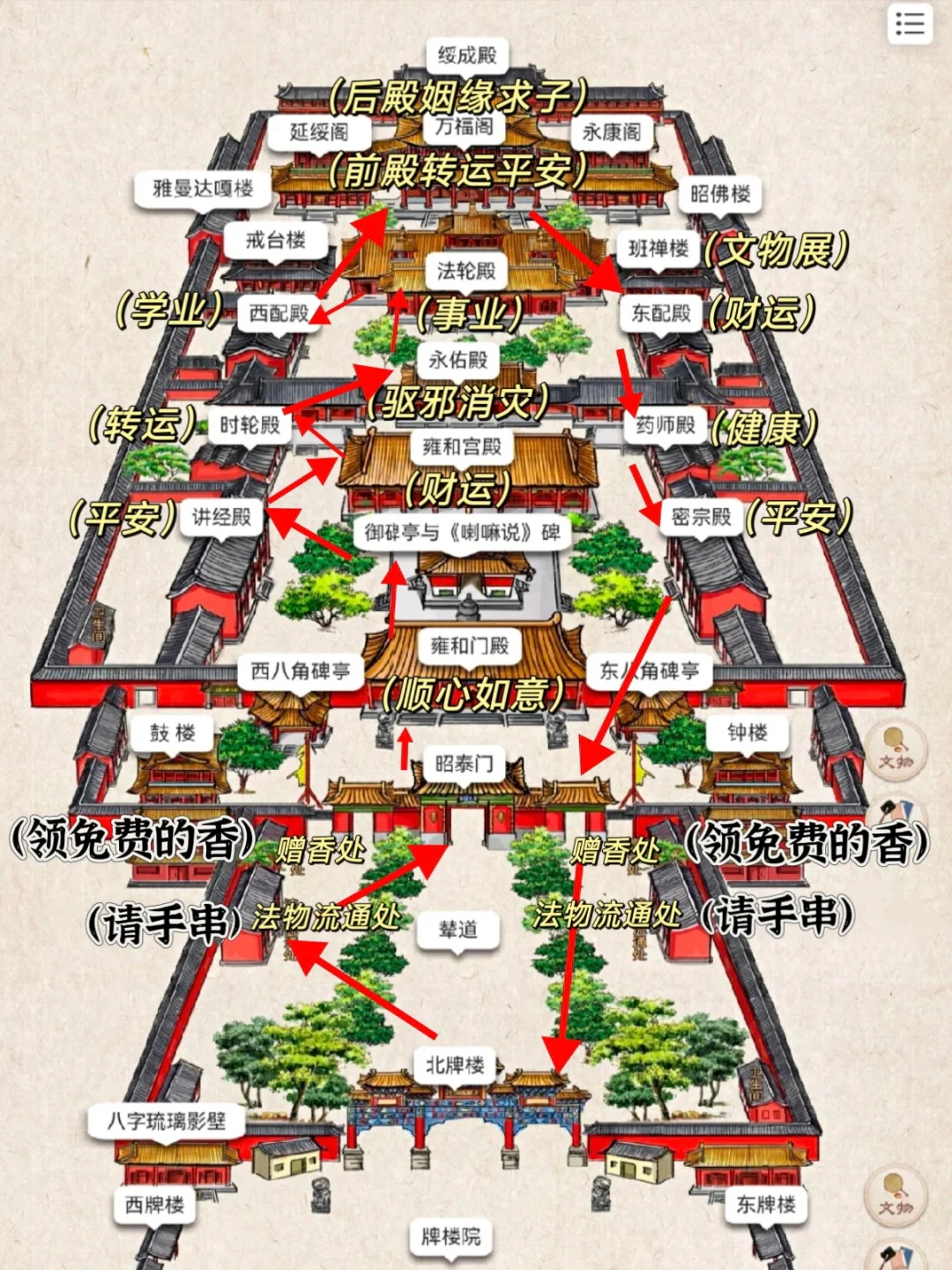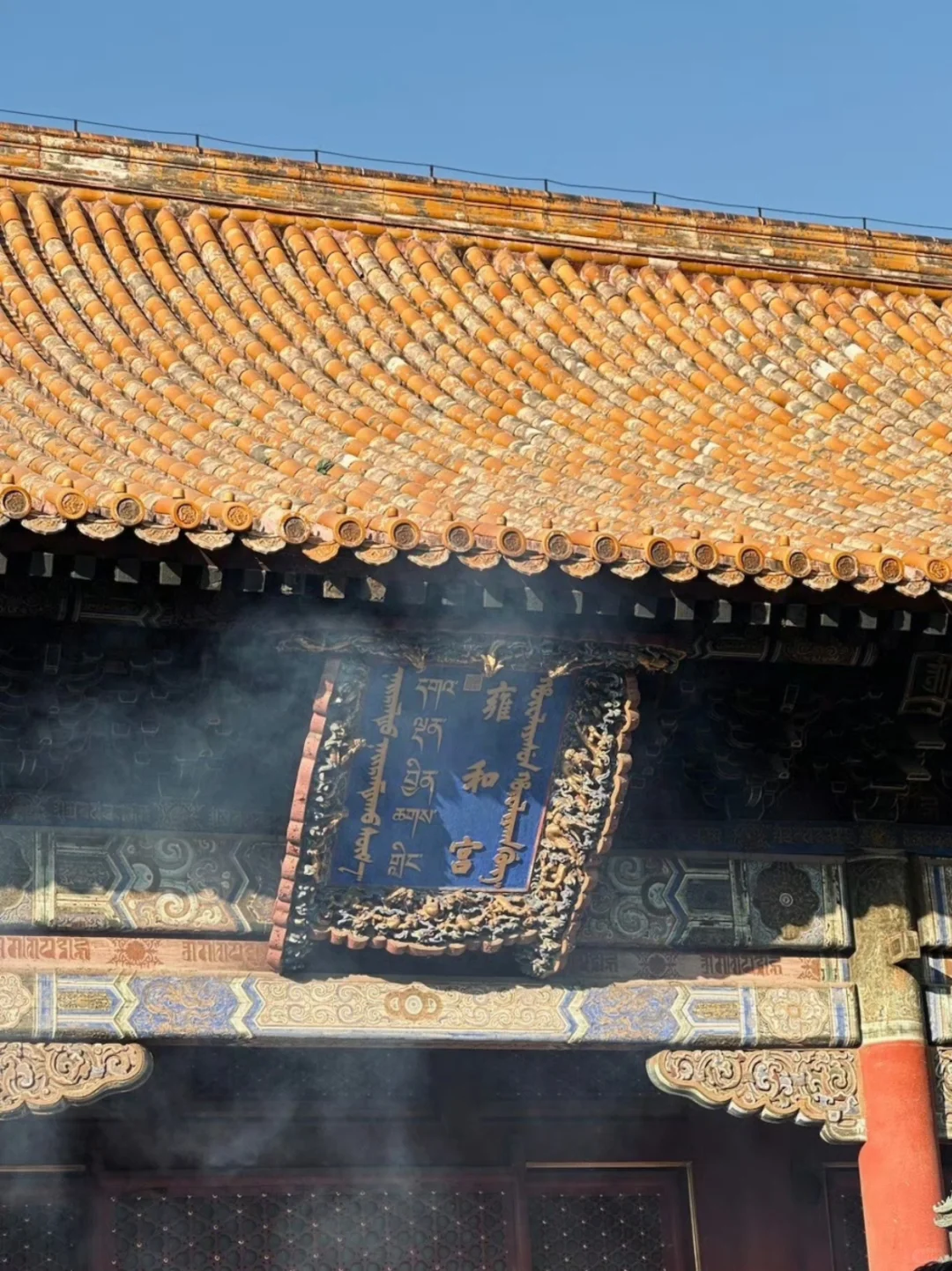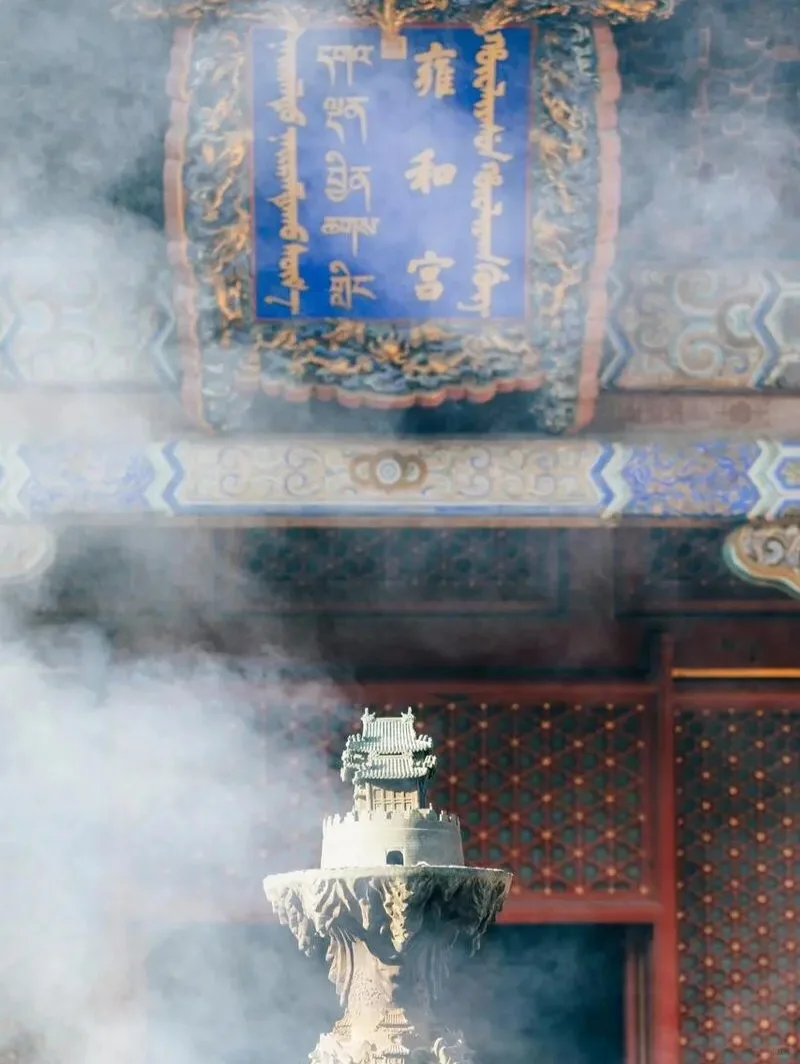The Ultimate Guide to Yongehe Temple: Key Points Not to Miss on Your First Visit
Last time I went to Yonghe Temple with friends, it was such a unique experience. Since it was my first time, I was really cautious and followed the guide closely, praying diligently all around. I got a lot out of it! In this article, I’ll share my specific tips and experiences, hoping it helps you too.
Overview of Yonghe Temple
Yonghe Temple is a great place for praying, rich in history, especially meaningful for careers, wealth, and peace. It’s said to be the birthplace of Emperor Qianlong, and is also known as “Dragon’s Hidden Fortunes.” Two emperors came from here, which really gives it a special holy vibe. Once you step inside, the atmosphere is very solemn, and the buildings are beautifully crafted, each part exuding a sense of historical depth.
Ticket Information
The ticket prices for Yonghe Temple are quite affordable, and you can enter easily by scanning your ID:
- Adult Ticket: 25 RMB/person
- Children and Senior Tickets: 12 RMB/person
Just a heads-up: you need to book your ticket in advance! Follow the official WeChat account “Yonghe Temple Visitor Service,” and after booking successfully, just scan your ID at the entrance. Don’t be late!
Opening Hours
Yonghe Temple’s hours change with the seasons, so you need to plan your visit accordingly to avoid a wasted trip:
- Summer and Autumn (April 1 - October 31): 9:00 AM - 5:00 PM
- Winter and Spring (November 1 - March 31): 9:00 AM - 4:30 PM
Especially for those visiting in winter, make sure to head out early and plan your route ahead of time.
Transportation Guide
Yonghe Temple is super easy to find, with public transport taking you right there! I recommend taking the subway:
- Subway Line 2 (Inner Circle Direction -> Jishuitan Direction), Yonghe Temple Station (Southeast Exit), about a 600-meter walk;
- Subway Line 5 (Tiantongyuan Direction), Yonghe Temple Station (Southeast Exit), about a 600-meter walk.
Both subway lines are very convenient. If you’re driving, I suggest looking for nearby parking, but keep in mind it might be tough to find a spot during peak seasons.

Praying Guidelines
At Yonghe Temple, the prayers are mainly divided by halls, and each Buddha hall has its own significance, so be careful not to pray randomly as it might affect your luck! Here are the key points for my prayers, super detailed:
Central Buddha Halls:
- Yonghe Gate Hall: Pray for things to go smoothly;
- Yonghe Palace Hall: Perfect for wealth, you can ask for abundant financial resources;
- Yongyou Hall: Great for dispelling evil and disasters;
- Dharmachakra Hall: Focuses on career advancement, very suitable;
- Wanfu Hall Front Hall: For fortune transformation and safety;
- Back Hall (Guanyin Hall): Excellent for love and childbirth prayers;
- Suicheng Hall: For luck and well-being, everyone tends to pray here.
East Side Buddha Halls:
- Esoteric Hall: For joy and peace;
- Medicine Master Hall: Must pray for health;
- East Side Hall: Also for wealth, but focuses more on continuous income.
West Side Buddha Halls:
- Sutra Lecture Hall: For peace and health;
- Time Wheel Hall: Said to help turn the tide;
- West Side Hall: Good for young people and students, hoping for success in exams!
Recommended Prayer Route
To avoid wandering around and praying randomly, I followed a clockwise route that was efficient and made sure not to miss any important halls:
- Start by praying at the main hall: Don’t hesitate, just go clockwise;
- Next, pray at the left side hall of the main hall;
- Finally, return to the right side hall of the main hall for your prayers.
Following this order, the whole process is very clear, and after finishing, you’ll feel really at ease!

Things to Note for Blessings
About blessings, here’s an important reminder:
Blessings are free of charge! You can bring small items you want to bless like your ID, charms, jewelry, stationery, etc., to the Dharma flow area. If you don’t have anything prepared, you can buy blessed artifacts inside the temple.
Dharma Flow Area
There are actually three Dharma flow areas in Yonghe Temple, located as follows:
- Outside the ticket check on the west side;
- East side of Zhao Tai Gate;
- Outside the Yongyou Hall on the west side—this one is super popular, usually has long lines, and is close to the blessing hall, so if you choose this one, try to queue early.
Important Reminders
Yonghe Temple, being such a solemn place, does have some etiquette and rules you need to remember. Here’s a checklist to keep in mind before you go:
- Enter through the side doors, never step on the threshold!
- Light the incense before entering the hall, then place it in the incense burner; no open flames allowed inside;
- No lighting incense, taking photos, or recording inside the hall, but you can photograph the building from the outside;
- Dress appropriately, avoid revealing clothes, and remember to take off sunglasses and hats when entering the main hall;
- No food or drink sales inside Yonghe Temple, so bringing your own water and snacks is better;
- If you have extra time, I recommend visiting the Panchen Hall and the Jie Tai Hall as they have exhibitions of cultural relics, definitely worth seeing.

That’s my experience and super detailed guide for praying at Yonghe Temple! Overall, it’s indeed a great spot for praying, and the entire process from praying to getting blessings is respectful and user-friendly for newcomers. For first-timers, be sure to take some time to understand the rules and prepare in advance, that way, your visit will go much smoother!
You Might Also Like
7 Must-Try Dining Spots in the 798 Art District
A personal guide to seven essential dining spots in the 798 Art District, offering delicious food perfect for gatherings. Each restaurant's signature dishes and average costs are detailed to provide you with a practical culinary guide.
A Guide to Visiting Beihai Park with Useful Tips
Beihai Park is a captivating garden where the entrance fee is only 10 yuan. Visitors can enjoy a variety of beautiful landscapes with a recommended route that's easy to follow, making it suitable for all types of tourists. The park features attractions like the Quiet Mind Studio and the Nine-Dragon Screen, as well as rentable boats and a variety of blooming flowers. It's a perfect spot for photography and relaxation, and we highly encourage visitors to go.
Exploring the Celestial Art of the Ancient Architecture Museum in Beijing
Delve into the celestial coffered ceilings at Beijing's Ancient Architecture Museum, where you can admire the 1,427 stars of the Ming Dynasty's celestial design. Experience the charm of national treasures, discover unique pathways and hidden experiences, and immerse yourself in the romance and mystery of ancient architecture.
Want to see more cultural experiences like this?
Follow ChinaTrip, explore the next destination, and discover more ways Chinese people travel.
Browse More ArticlesRecommended in the Same City






